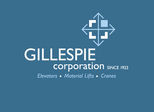- Glenn Siegel
- Oct 5, 2022
Sometimes in the world of improvised music, it’s not necessary to have long history to establish a rapport. The connection can be immediate if the musicians involved are accomplished, think-on your-feet veterans. Drummer Jeff Cosgrove had never met pianist Angelica Sanchez before they performed together on Friday at the Community Music School of Springfield, and Sanchez had never played with multi-instrumentalist Scott Robinson, either. Despite that lack of shared experience, the music produced on September 30 by the Jeff Cosgrove Quartet was cohesive, magical and very musical.
I also had never met Cosgrove before Pioneer Valley Jazz Shares agreed to host his band; indeed, I’d hardly heard of him. But when he mentioned the personnel: Angelica Sanchez, Scott Robinson and bassist Ken Filiano, my wheels of excitation whirled. The affable Filiano was the lynchpin, both relationally and musically. He knew everyone in the band, and provided the connective tissue that gave the evening it’s shape and coherence.
The concert centered around five Cosgrove compositions, loosely woven together without fanfare or interruption. The sketched pieces sat inside a sea of instant composition, with four master musicians listening and responding deeply in real time. The results: open and abstract, but with clear contours and moods, carried this participant to a place of acceptance and engagement.
Cosgrove was an unassuming bandleader, content to provide color and texture. His brief solos, sometimes with hands on skins, were understated and played at moderate volume. He skirted all the stereotypes: there was no bashing, no impossible tempos, no strict timekeeping, no overt displays of virtuosity. Instead, he added his voice to the others, moving the proceedings along without attracting undue attention. As a consequence, the band sounded as one.
Cosgrove lives in rural Maryland, and before that, in West Virginia, far from any critical mass of jazz energy. Although his profile might be low, his discography as a leader, featuring musicians like Frank Kimbrough, Matthew Shipp, William Parker, Mat Maneri, Scott Robinson and Ken Filiano, is very impressive. His latest, History Gets Ahead of the Story, is a trio with John Medeski and Jeff Lederer. He is starting “Jazz Inside Out”, a series of concerts in Frederick, MD that will put him the company of Dave Douglas, Caroline Davis, Akua Dixon and John Hébert. He has created his own scene, on his own terms. If you want to know more about Cosgrove, check out this interview which appeared in my favorite on-line jazz publication, Point of Departure.
This was my first opportunity to spend time with Scott Robinson, who was an overnight guest at chez Page/Siegel. We stayed up past 2am, talking about his “lab” in Teaneck, NJ, where he records, rehearses and repairs instruments. He owns hundreds of reed, brass and percussion instruments (20 tubas, he told me), which he reconditions and sometimes sells. Many of them are rare, obsolete or custom made. He is recording an improvised symphony comprised of him playing his musical ephemera, and is half-way through the first of four movements; he estimates it will take him 20 years to complete. The culmination of his 2015 residency at The Stone was his Orchestra Impossible, featuring well known New York musicians playing his assortment of obscure, rarely heard instruments. The day after the Jazz Shares concert, at Robinson’s behest, we visited some Northampton antique shops in search of old sound making devices. In Springfield, Robinson played a C melody saxophone, a tárogató(a Hungarian woodwind), and a cornet made in Springfield, Massachusetts by the John Heald Company in 1902 or 1903.
Robinson’s playing was magnificent, with complete control over all three horns. He used various extended techniques judiciously and conversationally, and always in service to the music. I liked the way he changed the dynamics of each section by moving closer or further from the microphone. At one point, he moved off-stage and played a drum, a bell and crash cymbals.
Sanchez has so much playing experience, I imagine she had no trepidation playing this new music with these new people. She just started a full time teaching job at Bard College, so she has lots of new in her life. Everything she played had an element of the unexpected, free from cliché, and delivered with confidence. She has become a real friend, and I look forward to seeing her next on October 30 at Real Art Ways in Hartford, with Terry Jenoure’s ensemble.
What a happy coming together of old and new companions, making live music for the benefit of us all.



























